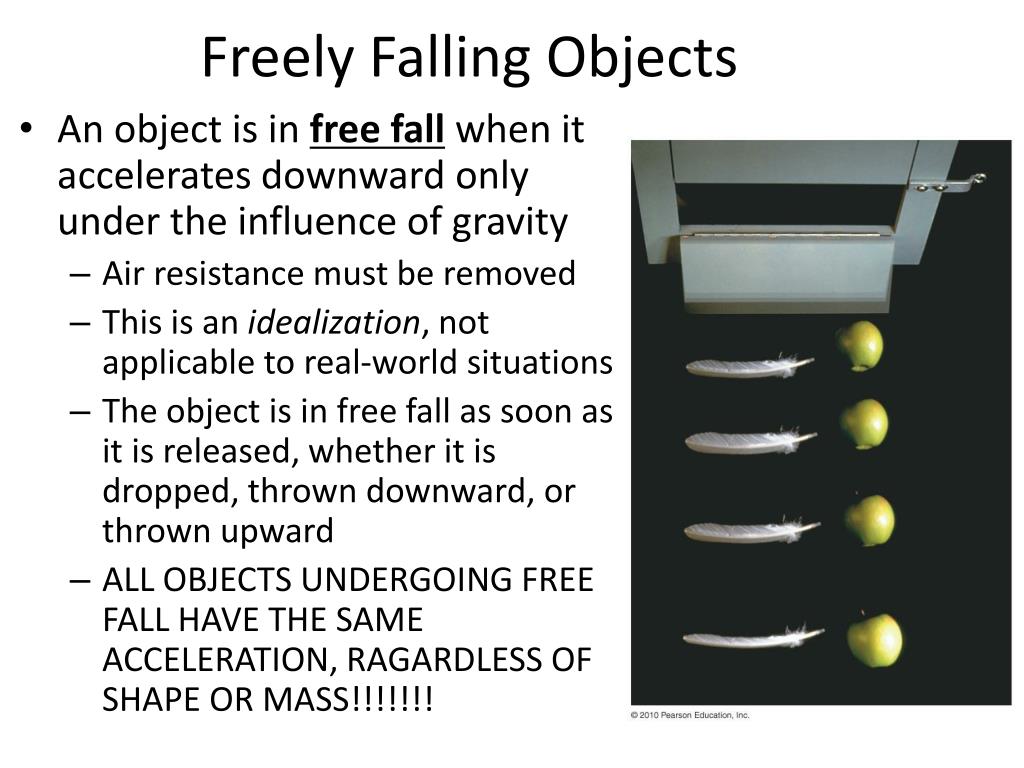

It is a scalar quantity, as it only has size (magnitude). The mass of a body is a measure of the amount of matter contained in a body or a measure of its inertia. Thus, the acceleration of a freely falling body is independent of its mass. In the late 16th century, Galileo Galilei proved this to be wrong by dropping two objects of different masses from the top of the leaning tower of Pisa. It was believed earlier that the acceleration of a falling body depends upon its mass. If the same experiment is conducted inside an evacuated glass tube, the two will land at the same time, as the air resistance is eliminated. This is because the air resistance acting on the feather is greater than that of the stone, which reduces its speed.

If they are dropped at the same time from the same height above the Earth, the stone lands first, and the feather lands later. The stone is heavier as compared to the feather. If they land at the same time, the acceleration due to gravity is the same for both, otherwise not.Ĭonsider two objects, namely a feather and a stone. To check this, two objects need to be dropped at the same time from the same height above the Earth. It means, that no matter how heavy or light an object is, it falls with the same acceleration toward the Earth. It does not depend on the mass of an object. The acceleration due to gravity is the same for various objects falling towards the Earth. Therefore, the value of the acceleration due to gravity on the Earth is 9.8 m/s 2. The acceleration due to the gravity of the Earth is, The radius of the Earth, R = 6.4 × 10 6 m The universal gravitational constant = G = 6.67 × 10 – 11 N m 2/kg 2 The acceleration due to gravity on the Earth is given by, G = (GM/r 2) Acceleration due to the gravity of the Earth: This means that the ball has been accelerating (increasing its velocity with time) throughout its motion. Therefore, there has been an increase in velocity from the initial point A and another point B in the motion of the ball. And, at point B, it is moving, which means it has some velocity. The ball was dropped at point A, which means it had zero velocity at that point. A is the initial point of the motion, and B is located somewhere in the path.
Define freefall in physics free#
Explanation: Free fall- A uniformly accelerated motionĬonsider two points A and B, in the path of a ball falling from the top of a building, as shown in figure 3.1 below. An example of a freely falling body without air resistance is the revolution of the Moon around the Earth, as outer space has no air. Such a motion in which the body moves under the action of gravity alone is called free fall.

If the upward air resistance is neglected, the body moves only under the action of gravity. The bodies falling towards the Earth experience two forces, namely the downward gravitational force and the upward air resistance (generally small).


 0 kommentar(er)
0 kommentar(er)
